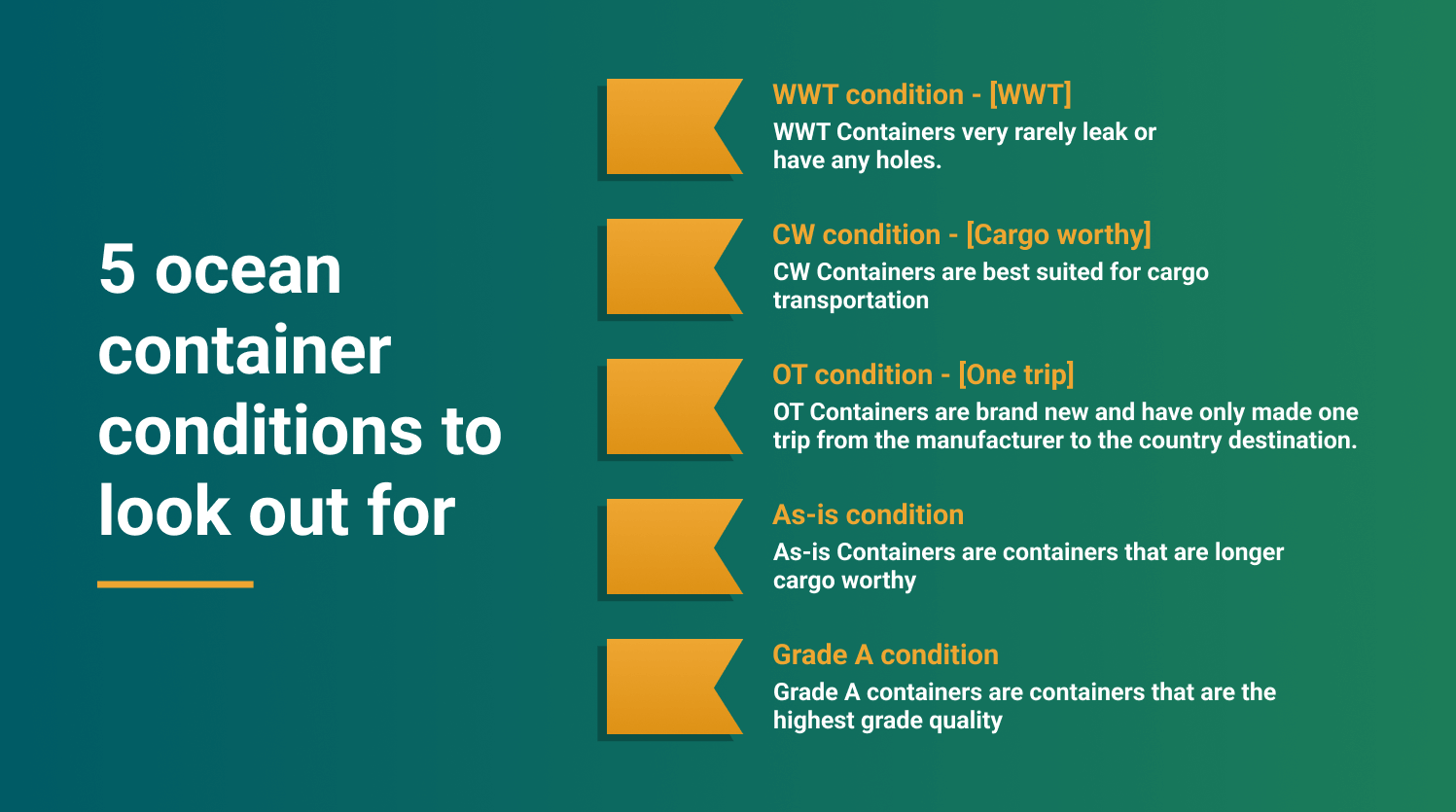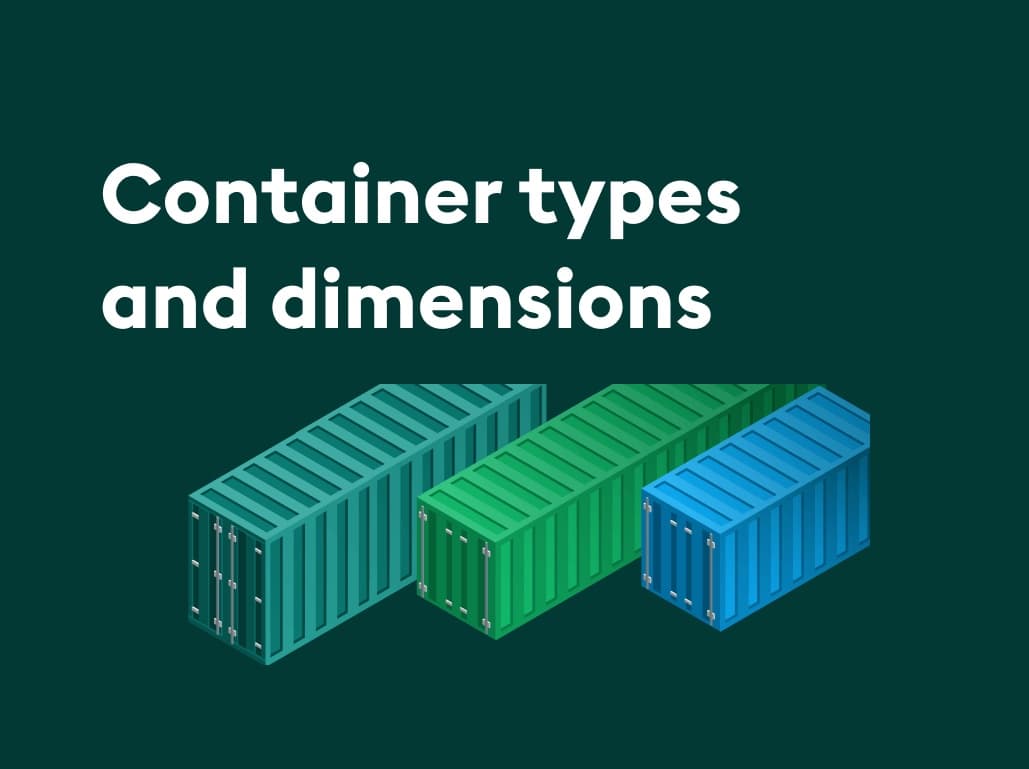Whether you’re looking to buy, sell, or rent a shipping container, understanding the different shipping container types will help you to make the best decision for your business needs while meeting safety standards.
The container market is ever-growing, with people across the world capitalizing on their versatility. This growth means that there are increasing numbers of people looking to buy or sell containers who have limited knowledge about different specifications and sizes. Whether you’re hoping to set up a bar in a container, use it as an office, for storage, or transportation, read on to discover what you know about different shipping container sizes and how you can source them at the best prices.
The 12 most common types of containers
The type of container you need will depend on anticipated usage and, if you plan on using it to transport goods, the type and size of goods you’ll be transporting. Unless specified below, most container types are 20 feet or 40 feet as standard.
Standard dry containers
Standard dry containers are the most common type of container used for general cargo such as furniture, clothing, machinery, and electronics. They are fully enclosed with solid walls, a roof, and flooring, and provide excellent protection against the elements. These come in typical sizes of 40-foot, 20-foot, and the less common 10-foot.
When choosing between sizes, consider your storage or shipping needs. Our 20ft containers are a great option for smaller loads or limited spaces, while our 40ft containers provide twice the capacity, making them ideal for larger shipments or bulk storage.

High-cube shipping containers
A high cube containers is similar to a standard container but is higher. This increased height allows for greater capacity and also accommodates slightly higher cargo, such as furniture or large equipment. Typical sizes are 40-foot or 45-foot, although other sizes, such as 53-foot high cube containers, are available.

Reefer containers
Also known as refrigerated containers, reefer containers contain a refrigeration unit so that they can safely transport temperature-sensitive cargo and perishable goods like food, pharmaceuticals, and flowers.

Double-door containers
double door containers fall in the category of “specialized containers”. They have the typical features of a standard container but also have doors at each end to allow for easy access.

Open-top containers
As the description indicates, open top containers have a tarpaulin top to allow for easy loading and unloading of oversized cargo. These containers are usually used for transporting very tall equipment, machinery, or logs.

Pallet wide containers
pallet wide containers are slightly wider than standard shipping containers to allow two European or standardized US pallets to fit side by side with minimal wasted space. Standard lengths are 20, 40, and occasionally 45 feet.

Flat rack containers
These containers have either collapsable sides or no sides at all; this open design allows you to transport oversized or irregularly shaped goods such as vehicles, large machinery, and building materials. flat rack containers tend to be reinforced to handle heavy loads.

Side-door containers
Side-opening or side door containers have doors on the longer sides to provide easy access. They are useful for unloading large or awkward cargo, or where flexible access is needed.

Hard top containers
A hard top container is another type of specialized container that is easier to load, like the open-top container, but has a hard, removable steel roof for extra durability.

ISO tank containers
As the name suggests, the ISO tank containers is shaped like a cylinder. The tank is built with a steel frame that meets the ISO (International Organization for Standardization) specifications and is designed to store or transport hazardous and non-hazardous liquids in bulk.

Insulated containers
An insulated shipping containers has insulated walls so that it can maintain a steady temperature. They don’t have an in-built refrigerator but are suitable for transporting temperature-sensitive goods across relatively short distances.

Flexitanks
blog flexitank are large bladders made of layers of polyethylene. They are sized to fit into a standard 20-foot container, allowing a dry container to transport large volumes of non-hazardous liquids.

Shipping container grades
In addition to the type of container, buyers have the choice of different container conditions There are four broad grade categories: New (one trip), Cargo-worthy (CW), Winder and Watertight (WWT), and As-Is.
New (one-trip) containers have only been used once, to transport their original shipment from the country of origin to destination. They tend to be in immaculate condition without dents, scratches, or rust and are ideal for high-end modifications, shipping, and storage.
Cargo-Worthy containers are a little older but are still fully functional and certified for use for travel, meeting CSC (International Convention for Safe Containers) standards. They might have a few scratches or light rust, but still good for storage, shipping, and building projects.
Wind and Watertight containers are still structurally sound but aren’t suitable for international shipping. They might have faded paint, rust, or dents, but are still watertight and suitable for storage or lower-budget modification projects. AS-Is containers are good for repair or salvage projects but will have significant wear and tear and obvious damage, such as missing parts, holes, or structural damage.

Factors That Impact Container Costs
The shipping container price will vary depending on the factors above. If you want a 20-foot CW container and happen to live in a location where there is a large influx of goods, so containers are highly available, you will probably pay less. However, if you are looking for a specialized container in an area where containers are more scarce, you will likely pay more. Our online marketplace lets you compare different container prices for different locations to help you get the best deal.
How to buy a shipping container
You can buy a container from a dealership or directly from the seller, but with dealers, there is a risk of hidden fees, and you don’t have any assurance of quality with a private sale. The safest way to buy a container is via a secure online marketplace such as Container xChange. Check out our easy buy a shipping container guide.
How to sell a shipping container
If you have a shipping container to sell, Container xChange can help you to get the best deal with minimal hassle. Take a look at our how to sell a shipping container guide.
If you’ve got any questions about buying or selling containers, contact us; our expert team will be happy to help you begin the process.
Types of containers: Common FAQs
There are two main types of shipping containers: Standard dry containers and special containers. Dry containers come in 10ft, 20ft, 40ft and 40ft high cubes sizes. Special containers include reefers, flat racks, double doors and pallet-wide units.
